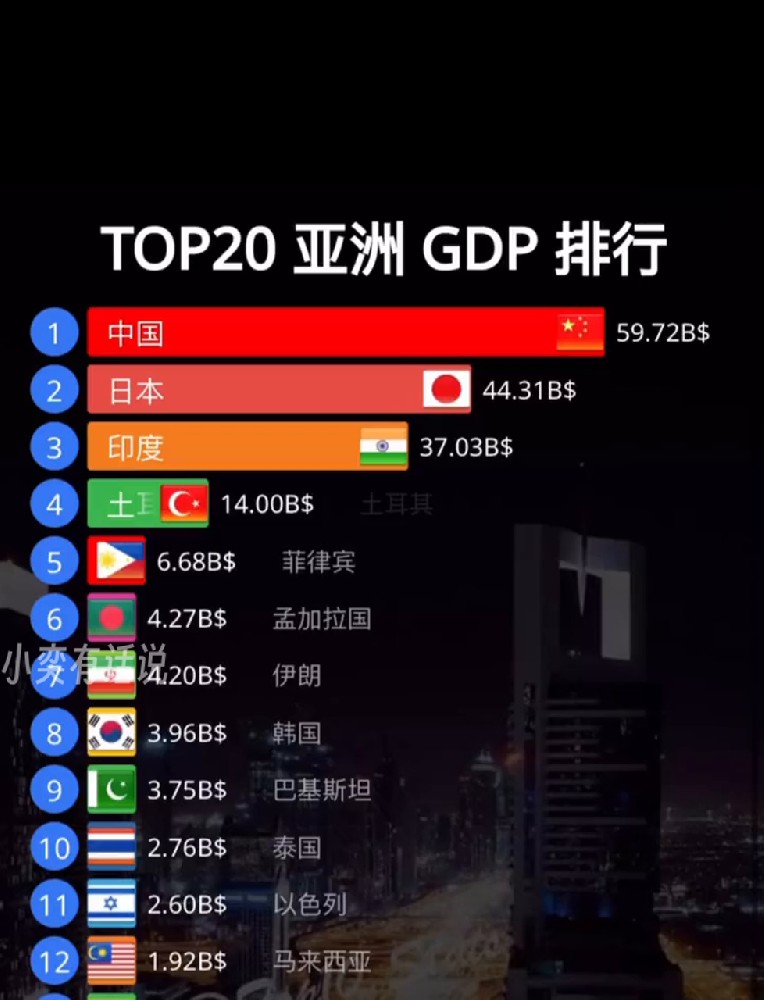Asia will continue to serve as the main engine of the world economy
At the press conference held on March 25th, the Boao Forum for Asia 2025 Annual Conference released its flagship report - "Asia Economic Prospects and Integration Process 2025 Annual Report". The report believes that despite the increasing uncertainty of global economic growth, Asia will still be the main engine of the world economy. It is expected that the weighted real GDP growth rate in Asia will be 4.5% in 2025, slightly higher than the 4.4% in 2024.
Zafar, Policy Advisor to the Secretary General of the Boao Forum for Asia, said in an interview with China Securities Journal that he is optimistic about China's continued policy of expanding opening-up, and the stable development of the Chinese economy will provide impetus for global growth. Foreign investors and entrepreneurs have expressed their confidence in China's economic development, and they have also promised to continue investing and further strengthen cooperation with China in the future, "said Zafar.
The actual income level in Asia is expected to increase
Zhang Yuyan, Dean of the School of International Political Economy at the University of Chinese Academy of Social Sciences, stated in an interpretation of the report that it is expected that the proportion of the Asian economy in the global economy will continue to rise by 2025. We have reason to maintain confidence in Asia's growth and future
From the perspective of employment and income, Asia is generally showing a positive trend. The report predicts that the overall unemployment rate in Asia will be 4.39% by 2025, lower than the global level of 4.96%. The overall income situation in the region is stable. With the recovery of economic growth and the continuous decline of inflation levels, it is expected that the real income level in Asia will increase by 2025.
From this year's report, it can be seen that in the face of many challenges, Asian economies, especially China and ASEAN, continue to demonstrate strong resilience and vitality, leading the world in economic growth, trade in goods and services, regional economic integration, etc., and also nurturing new potential and space, becoming an important force and cornerstone for stabilizing and supporting the world economy, "said Zhang Jun, Secretary General of the Boao Forum for Asia, at the press conference.
China remains the global manufacturing hub
The report believes that Asia remains the core of the global value chain, and China remains the center of the global manufacturing industry's global value chain. Lin Guijun, former vice president of the University of International Business and Economics, gave an example that in 2023, Asia's share of global intermediate goods trade will be 41.17%, far exceeding the levels of the European Union and North America.
The report proposes that half of the top 22 intermediate goods with the largest global trade volume have the highest dependence on Asia, especially the electronic components produced in Asia account for more than 70% of the global intermediate goods trade in this category, reflecting Asia's absolute competitive advantage in high-tech intermediate goods production.
The entry into force of the Regional Comprehensive Economic Partnership (RCEP) has further promoted the reduction of intermediate goods tariffs among major Asian economies. In 2023, China will still maintain a leading position in 20 of the 22 most traded intermediate goods, maintaining a significant competitive advantage in the global supply chain.
In addition, digital trade and service trade are prominent highlights of Asian economic and trade. According to the report, the growth rate of retail e-commerce in the Asia Pacific region will reach 8.4% in 2024; The total import and export volume of cross-border e-commerce in China is about 369 billion US dollars, a year-on-year increase of 10.8%; The total transaction volume of goods in the Southeast Asian e-commerce industry reached 263 billion US dollars, a year-on-year increase of 15%. The major economies in Asia have become important participants in global digital trade, and the formulation of digital trade rules is steadily advancing in the Asian region.
The financial market will remain generally stable
The report shows that Asian financial markets will remain generally stable amidst frequent fluctuations. It is expected that the exchange rates of major Asian economies will remain generally stable, while most economies' currencies may face depreciation pressure. The decline in inflation and the continued easing of monetary policy in many economies may bring a modest boost to economic activities, and the yield of 10-year treasury bond bonds in major Asian economies may fall back. In addition, the overall risk of the banking industry is controllable.
Regarding the capital market, the report suggests that Asian economies have good policy continuity and steady economic recovery, which will lay a solid foundation for the continued rebound of the stock market. Among them, the Chinese stock market may continue to rebound, mainly due to the support of multiple favorable factors such as the recovery of corporate profits, reasonable valuations, and sufficient policy tools. Goldman Sachs predicted in November 2024 that there is a potential return of approximately 13% to 15% for A-shares and Hong Kong stocks by 2025. The profit growth rates of MSCI China Index and CSI 300 Index, international rating agencies, will reach 7% and 10% respectively.




